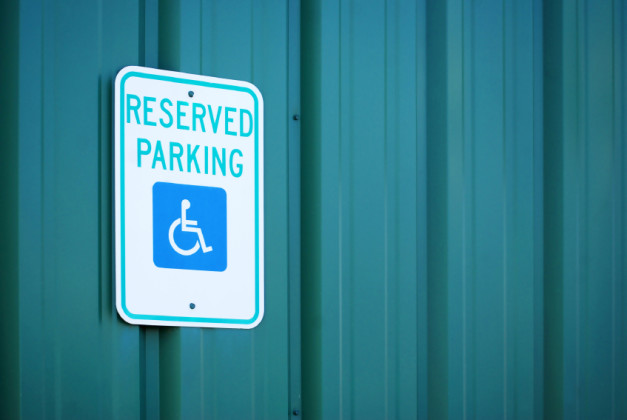I’m afraid others will judge me, but more than that, I don’t want to admit to myself that I’m disabled.
“Have you gotten a placard yet?” Janet asked.
I shook my head.
Janet leaned across the table and slammed her hand down. “Wendy, you’re making me angry. You need to get one.”
Janet isn’t the only one who feels that way. A good friend, my husband, and my mom all agree with that sentiment. I’m the only one who doesn’t share their conviction that I need a placard.
I’m technically considered disabled, but I don’t think of myself as “disabled enough.” I appear fine. My disability isn’t easily explained, easily understood, or even easily noticed. I am an almost-40-year-old woman living with an autoimmune disease called Undifferentiated Connective Tissue Disease. I live with daily pain and weakness in my legs.
Becoming a stay-at-home mom to my 7-year-old son has been the biggest life change I’ve made since becoming disabled. Days away from my 37th birthday, and after 12 years teaching in a Los Angeles public elementary school, I retired. It wasn’t an easy decision, nor was it easy to qualify for it. The process involved pages and pages of forms for me to fill out, and many pages of documentation to be sent in by my rheumatologist. Once the forms were received, I was told it could take several months for them to be reviewed and for a final decision to be made. But within a few days of receipt of the forms, I was notified that my application had been approved. I wasn’t sure if that was a good sign or not. Had the state of California quickly acknowledged what I had spent a few years trying to deny?
I receive my monthly disability checks, and I volunteer in my son’s classroom instead of teaching in my own. I create the illusion that I’m “OK.” But that placard would be an outwardly visible sign that I’m not OK, that there is something wrong with me. That I’m disabled. Except I don’t look handicapped or incapacitated in any way. I don’t walk with a cane or a walker. I just walk with pain.
Parking in Los Angeles is never easy, so most people think anything that could improve the situation should be done, including utilizing a placard. But for now, I’m able to manage without one. My legs may feel as if I’m dragging along weights behind them. My feet may feel as if there is gum stuck to the bottom of my shoes. But I can still walk to and from my non-handicapped parking space.
Others need that handicapped spot more than I do. Others who rely on a wheelchair or walker. Others who look the part.
Like my grandma, for example. My grandma was disabled, completely dependent on a cane to stand upright, although she most often preferred to use her wheelchair to get around. She suffered from the cumulative effects of multiple strokes and living with rheumatoid arthritis.
I remember one incident with my grandparents, when my grandpa had parked the car and was making his way to the trunk to get out my grandma’s wheelchair. But before he could get her chair out, some woman in the parking lot had yelled at him, chastised him for taking a handicapped parking space. He tried to explain that his handicapped wife was in the car, but the accuser kept on walking. My grandpa was infuriated. And it makes me wonder how I would handle it if someone accused me of using a handicapped spot I didn’t need. Would I lift up my left pant leg and show them the scar from a muscle biopsy? Would I try to explain that I live with an autoimmune disease that causes daily pain in my legs?
Because I have been that judgmental person. I have seen people who appeared healthy and fine wearing yoga pants and workout gear, who parked in a designated handicapped spot, with a placard properly displayed inside their SUV, and I judged them as lazy or dishonest. And I don’t want that same rash judgment passed on to me.
But more than that, I don’t want to admit to myself that I’m disabled. I don’t want to admit that my body can no longer function the way it once did. I don’t want to admit that I am not entirely the same woman I was when my son was born.
But whether I want to admit it or not, the fact remains: I am disabled. I have changed. My body has changed. My physical limitations are real. And I have to shift my thinking so I don’t regard that placard, hanging from my rearview mirror, as my own personal scarlet letter.
Instead, when I’m ready to admit I need the placard, I will need to hang it from my rearview mirror and see it as the badge of acceptance, honesty, and empowerment it is meant to be.
Wendy Kennar is a freelance writer, who finds inspiration in her 7-year-old son and from her memories of her 12-year teaching career. Her writing has appeared in several publications and anthologies including: the Los Angeles Times, Christian Science Monitor, Role Reboot, United Teacher, L.A. Parent, MomsLA.com, and Lessons From My Parents, among others. She blogs at http://wendykennar.blogspot
Related Links:

